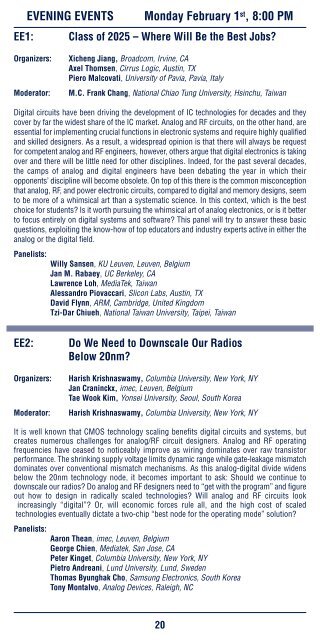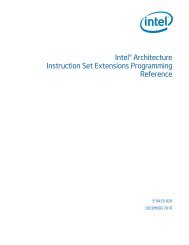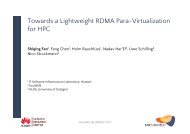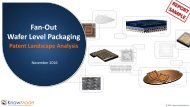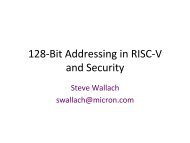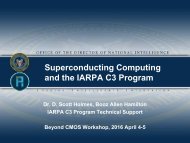EVENING EVENTS Monday February 1 st , 8:00 PM EE1: Class of 2025 – Where Will Be the Best Jobs? Organizers: Moderator: Xicheng Jiang, Broadcom, Irvine, CA Axel Thomsen, Cirrus Logic, Austin, TX Piero Malcovati, University of Pavia, Pavia, Italy M.C. Frank Chang, National Chiao Tung University, Hsinchu, Taiwan Digital circuits have been driving the development of IC technologies for decades and they cover by far the widest share of the IC market. Analog and RF circuits, on the other hand, are essential for implementing crucial functions in electronic systems and require highly qualified and skilled designers. As a result, a widespread opinion is that there will always be request for competent analog and RF engineers, however, others argue that digital electronics is taking over and there will be little need for other disciplines. Indeed, for the past several decades, the camps of analog and digital engineers have been debating the year in which their opponents’ discipline will become obsolete. On top of this there is the common misconception that analog, RF, and power electronic circuits, compared to digital and memory designs, seem to be more of a whimsical art than a systematic science. In this context, which is the best choice for students? Is it worth pursuing the whimsical art of analog electronics, or is it better to focus entirely on digital systems and software? This panel will try to answer these basic questions, exploiting the know-how of top educators and industry experts active in either the analog or the digital field. Panelists: Willy Sansen, KU Leuven, Leuven, Belgium Jan M. Rabaey, UC Berkeley, CA Lawrence Loh, MediaTek, Taiwan Alessandro Piovaccari, Slicon Labs, Austin, TX David Flynn, ARM, Cambridge, United Kingdom Tzi-Dar Chiueh, National Taiwan University, Taipei, Taiwan EE2: Organizers: Moderator: Do We Need to Downscale Our Radios Below 20nm? Harish Krishnaswamy, Columbia University, New York, NY Jan Craninckx, imec, Leuven, Belgium Tae Wook Kim, Yonsei University, Seoul, South Korea Harish Krishnaswamy, Columbia University, New York, NY It is well known that CMOS technology scaling benefits digital circuits and systems, but creates numerous challenges for analog/RF circuit designers. Analog and RF operating frequencies have ceased to noticeably improve as wiring dominates over raw transistor performance. The shrinking supply voltage limits dynamic range while gate-leakage mismatch dominates over conventional mismatch mechanisms. As this analog-digital divide widens below the 20nm technology node, it becomes important to ask: Should we continue to downscale our radios? Do analog and RF designers need to “get with the program” and figure out how to design in radically scaled technologies? Will analog and RF circuits look increasingly “digital”? Or, will economic forces rule all, and the high cost of scaled technologies eventually dictate a two-chip “best node for the operating mode” solution? Panelists: Aaron Thean, imec, Leuven, Belgium George Chien, Mediatek, San Jose, CA Peter Kinget, Columbia University, New York, NY Pietro Andreani, Lund University, Lund, Sweden Thomas Byunghak Cho, Samsung Electronics, South Korea Tony Montalvo, Analog Devices, Raleigh, NC 20
SESSION 7 Tuesday February 2 nd , 8:30 AM Nonvolatile Memory Solutions Session Chair: Sungdae Choi, SK hynix, Icheon, Korea Associate Chair: Jin-Man Han, Samsung Electronics, Hwaseong, Korea 8:30 AM 7.1 256Gb 3b/Cell V-NAND Flash Memory with 48 Stacked WL Layers D. Kang, W. Jeong, C. Kim, D-H. Kim, Y. S. Cho, K-T. Kang, J. Ryu, K-M. Kang, S. Lee, W. Kim, H. Lee, J. Yu, N. Choi, D-S. Jang, J-D. Ihm, D. Kim, Y-S. Min, M-S. Kim, A-S. Park, J-I. Son, I-M. Kim, P. Kwak, B-K. Jung, D-S. Lee, H. Kim, H-J. Yang, D-S. Byeon, K-T. Park, K-H. Kyung, J-H. Choi, Samsung Electronics, Hwaseong, Korea 9:00 AM 7.2 4Mb STT-MRAM-Based Cache with Memory-Access-Aware Power DS1 Optimization and Write-Verified-Write / Read-Modified-Write Scheme H. Noguchi 1 , K. Ikegami 1 , S. Takaya 1 , E. Arima 2 , K. Kushida 1 , A. Kawasumi 1 , H. Hara 1 , K. Abe 1 , N. Shimomura 1 , J. Ito 1 , S. Fujita 1 , T. Nakada 2 , H. Nakamura 2 1 Toshiba, Kawasaki, Japan; 2 University of Tokyo, Tokyo, Japan 9:30 AM 7.3 A Resistance-Drift Compensation Scheme to Reduce MLC PCM Raw BER by Over 100× for Storage-Class Memory Applications W-S. Khwa 1,2 , M-F. Chang 2 , J-Y. Wu 1 , M-H. Lee 1 , T-H. Su 1,3 , K-H. Yang 3 , T-F. Chen 3 , T-Y. Wang 1 , H-P. Li 1 , M. BrightSky 4 , S. Kim 4 , H-L. Lung 1 , C. Lam 4 1 Macronix International, Hsinchu, Taiwan; 2 National Tsing Hua University, Hsinchu, Taiwan 3 National Chiao Tung University, Hsinchu, Taiwan 4 IBM T. J. Watson Reseach Center, Yorktown Heights, NY Break 10:00 AM 10:15 AM 7.4 A 256b-Wordlength ReRAM-Based TCAM with 1ns Search Time and 14× Improvement in FOM Using 2.5T1R Cell and Region-Splitter Sense Amplifier C-C. Lin 1,2 , J-Y. Hung 1 , W-Z. Lin 1 , C-P. Lo 1 , Y-N. Chiang 1 , H-J. Tsai 3 , G-H. Yang 3 , Y-C. King 1 , C. J. Lin 1 , T-F. Chen 3 , M-F. Chang 1 1 National Tsing Hua University, Hsinchu, Taiwan; 2 TSMC, Hsinchu, Taiwan 3 National Chiao Tung University, Hsinchu, Taiwan 10:45 AM 7.5 A 128Gb 2b/cell NAND Flash Memory in 14nm Technology with t PROG =640μs and 800Mb/s I/O Rate S. Lee, J-Y. Lee, I-H. Park, J. Park, S-W. Yun, M-S. Kim, J-H. Lee, M. Kim, K. Lee, T. Kim, B. Cho, D. Cho, S. Yun, J-N. Im, H. Yim, K-H. Kang, S. Jeon, S. Jo, Y-L. Ahn, S-M. Joe, S. Kim, D-K. Woo, J. Park, H-W. Park, Y. Kim, J. Park, Y. Choi, M. Hirano, J-D. Ihm, B. Jeong, S-K. Lee, M. Kim, H. Lee, S. Seo, H. Jeon, C-H. Kim, H. Kim, J. Kim, Y. Yim, H. Kim, D-S. Byeon, H-J. Yang, K-T. Park, K-H. Kyung, J-H. Choi Samsung Electronics, Hwaseong, Korea 11:15 AM 7.6 A 90nm Embedded 1T-MONOS Flash Macro for Automotive Applications with 0.07mJ/8kB Rewrite Energy and Endurance Over 100M Cycles Under T j of 175°C H. Mitani 1 , K. Matsubara 1 , H. Yoshida 1 , T. Hashimoto 2 , H. Yamakoshi 2 , S. Abe 2 , T. Kono 1 , Y. Taito 1 , T. Ito 1 , T. Krafuji 1 , K. Noguchi 1 , H. Hidaka 1 , T. Yamauchi 1 1 Renesas Electronics, Kodaira, Japan; 2 Renesas Electronics, Hitachinaka, Japan 11:45 AM 7.7 A 768Gb 3b/cell 3D-Floating-Gate NAND Flash Memory T. Tanaka 1 , M. Helm 2 , T. Vali 3 , R. Ghodsi 2 , K. Kawai 1 , J-K. Park 2 , S. Yamada 1 , F. Pan 2 , Y. Einaga 1 , A. Ghalam 2 , T. Tanzawa 1 , J. Guo 2 , T. Ichikawa 1 , E. Yu 2 , S. Tamada 1 , T. Manabe 1 , J. Kishimoto 1 , Y. Oikawa 1 , Y. Takashima 1 , H. Kuge 1 , M. Morooka 1 , A. Mohammadzadeh 2 , J. Kang 2 , J. Tsai 2 , E. Sirizotti 3 , E. Lee 2 , L. Vu 2 , Y. Liu 2 , H. Choi 2 , K. Cheon 2 , D. Song 2 , D. Shin 2 , J. H. Yun 2 , M. Piccardi 2 , K-F. Chan 2 , Y. Luthra 2 , D. Srinivasan 2 , S. Deshmukh 2 , K. Kavalipurapu 2 , D. Nguyen 2 , G. Gallo 3 , S. Ramprasad 2 , M. Luo 2 , Q. Tang 2 , M. Incarnati 3 , A. Macerola 3 , L. Pilolli 3 , L. De Santis 3 , M. Rossini 3 , V. Moschiano 3 , G. Santin 3 , B. Tronca 3 , H. Lee 2 , V. Patel 2 , T. Pekny 2 , A. Yip 2 , N. Prabhu 4 , P. Sule 4 , T. Bemalkhedkar 4 , K. Upadhyayula 4 , C. Jaramillo 4 1 Micron, Tokyo, Japan; 2 Micron, Milpitas, CA; 3 Micron, Avezzano, Italy; 4 Intel, Folsom, CA Conclusion 12:15 PM 21
- Page 1 and 2: ADVANCE PROGRAM THURSDAY ALL-DAY 4
- Page 3 and 4: TABLE OF CONTENTS Tutorials .......
- Page 5 and 6: TUTORIALS Sunday January 31 st T3:
- Page 7 and 8: TUTORIALS Sunday January 31 st T9:
- Page 9 and 10: FORUM 2 Sunday January 31 st , 8:00
- Page 11 and 12: EVENING SESSION ES2: Sunday January
- Page 13 and 14: SESSION 1 Monday February 1 st , 8:
- Page 15 and 16: SESSION 3 Monday February 1 st , 1:
- Page 17 and 18: SESSION 5 Monday February 1 st , 1:
- Page 19: Demonstration Session 1, Monday Feb
- Page 23 and 24: SESSION 9 Tuesday February 2 nd , 8
- Page 25 and 26: SESSION 11 Tuesday February 2 nd ,
- Page 27 and 28: SESSION 13 Tuesday February 2 nd ,
- Page 29 and 30: SESSION 15 Tuesday February 2 nd ,
- Page 31 and 32: Demonstration Session 2, Tuesday, F
- Page 33 and 34: EVENING EVENTS Tuesday February 2 n
- Page 35 and 36: SESSION 18 Wednesday February 3 rd
- Page 37 and 38: SESSION 20 Wednesday February 3 rd
- Page 39 and 40: SESSION 22 Wednesday February 3 rd
- Page 41 and 42: SESSION 24 Wednesday February 3 rd
- Page 43 and 44: SESSION 26 Wednesday February 3 rd
- Page 45 and 46: SESSION 28 Wednesday February 3 rd
- Page 47 and 48: SHORT COURSE Thursday February 4 th
- Page 49 and 50: FORUM 3 Thursday February 4 th , 8:
- Page 51 and 52: FORUM 5 Thursday February 4 th , 8:
- Page 53 and 54: INTERNATIONAL TECHNICAL PROGRAM COM
- Page 55 and 56: INTERNATIONAL TECHNICAL PROGRAM COM
- Page 57 and 58: INTERNATIONAL TECHNICAL PROGRAM COM
- Page 59 and 60: CONFERENCE INFORMATION SSCS MEMBERS
- Page 61 and 62: CONFERENCE INFORMATION IEEE NON-DIS
- Page 63: 445 Hoes Lane P.O. Box 1331 Piscata


